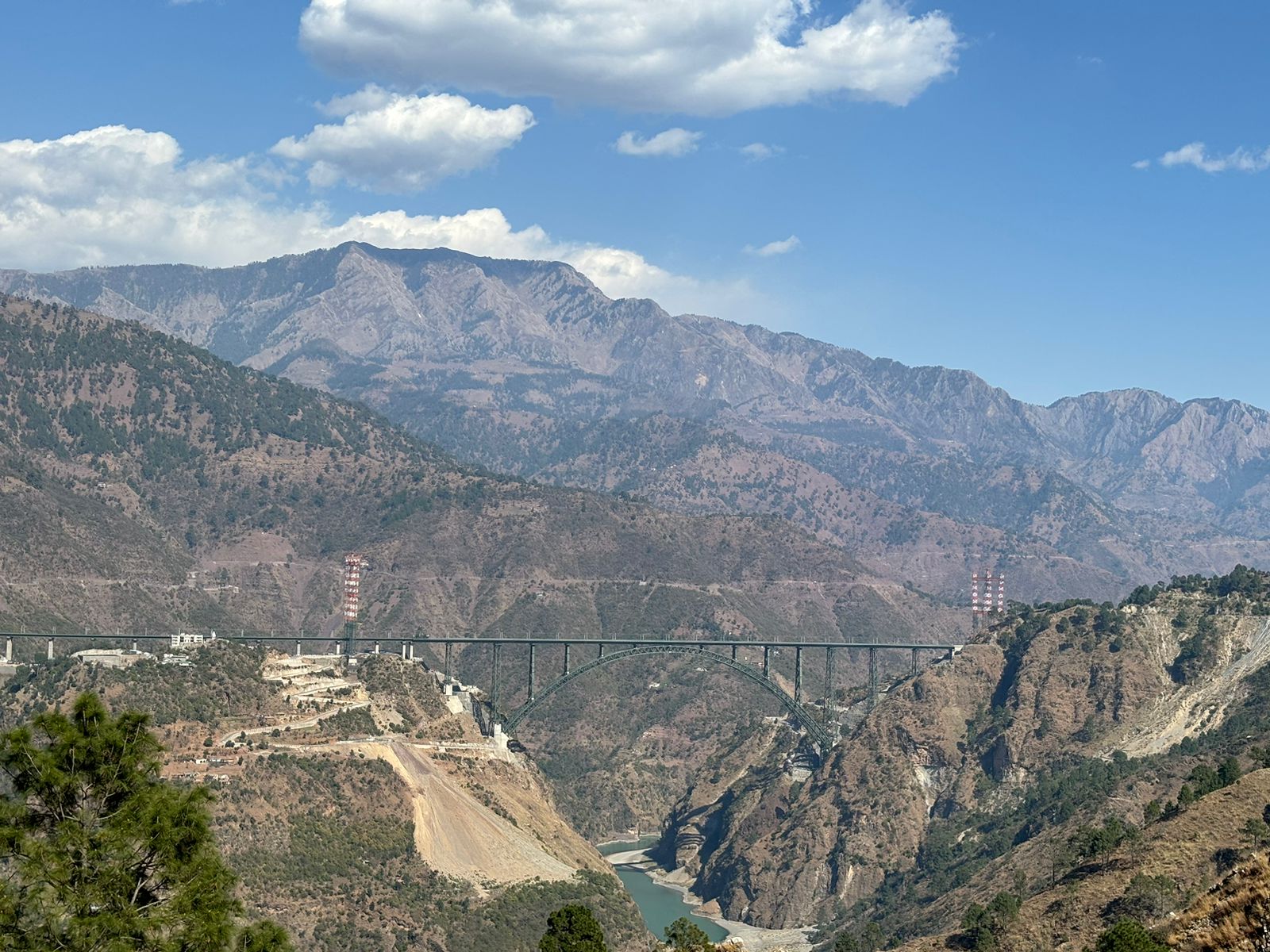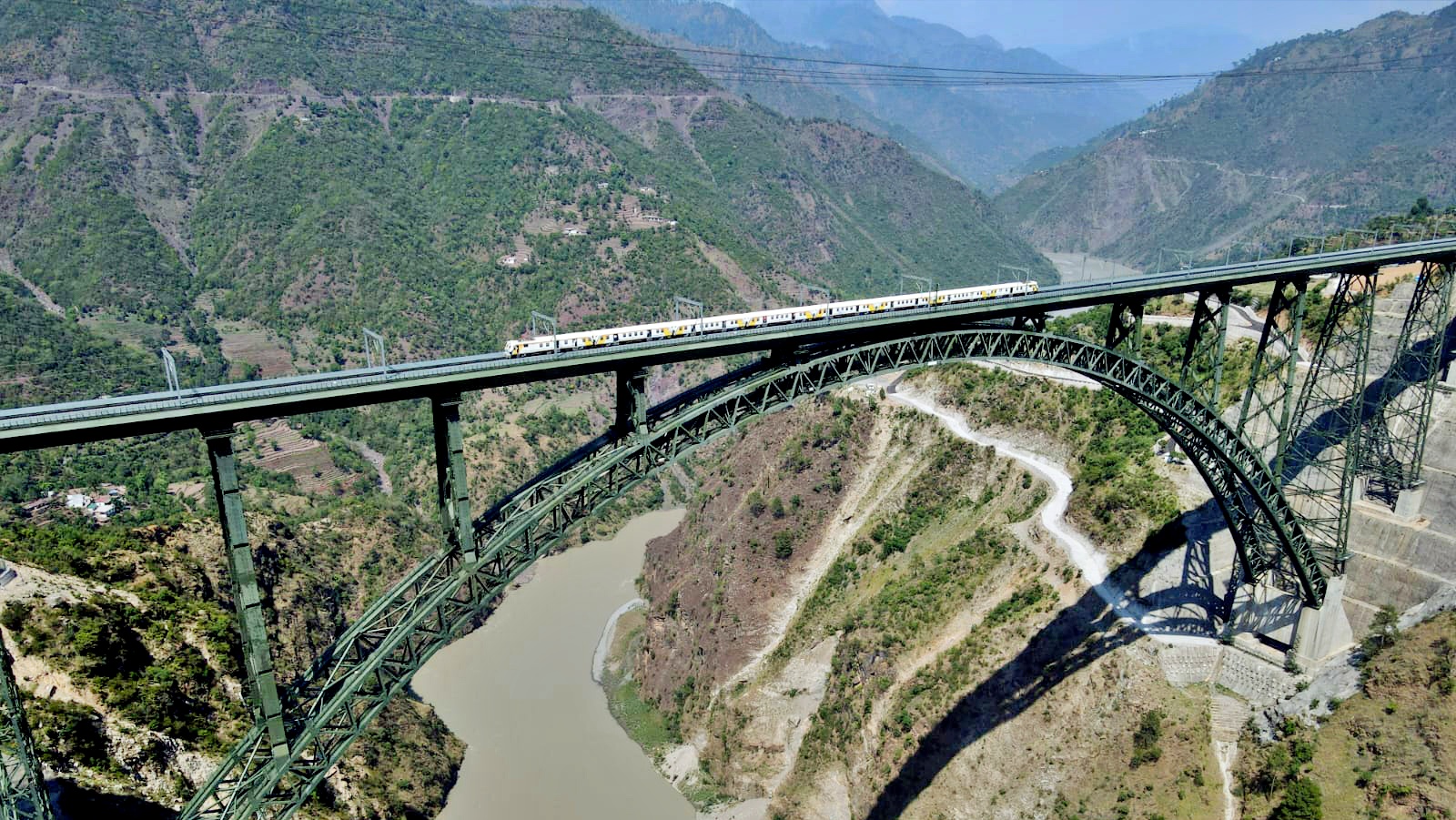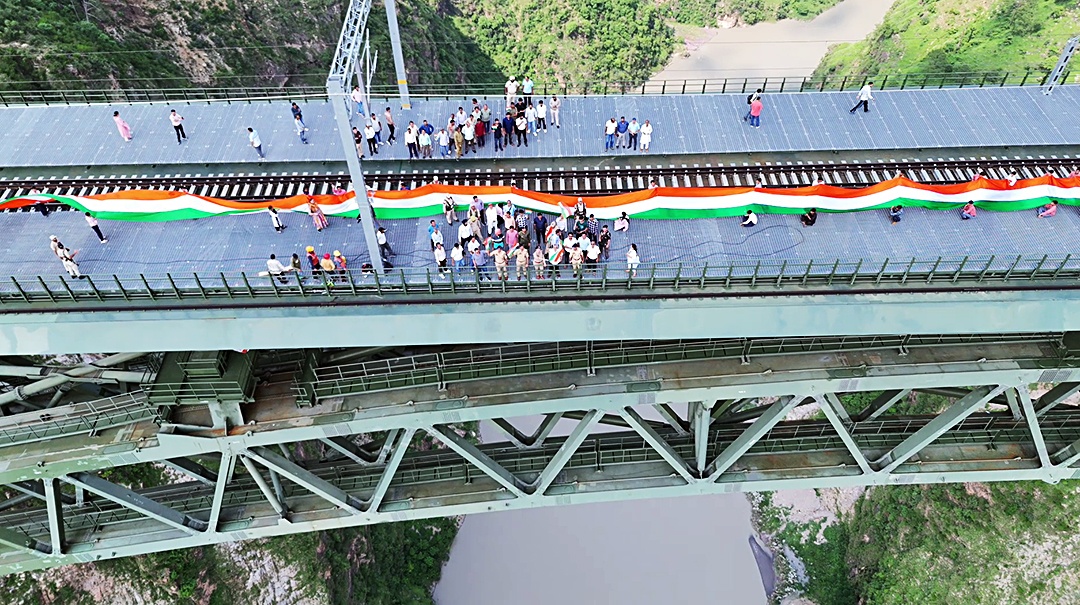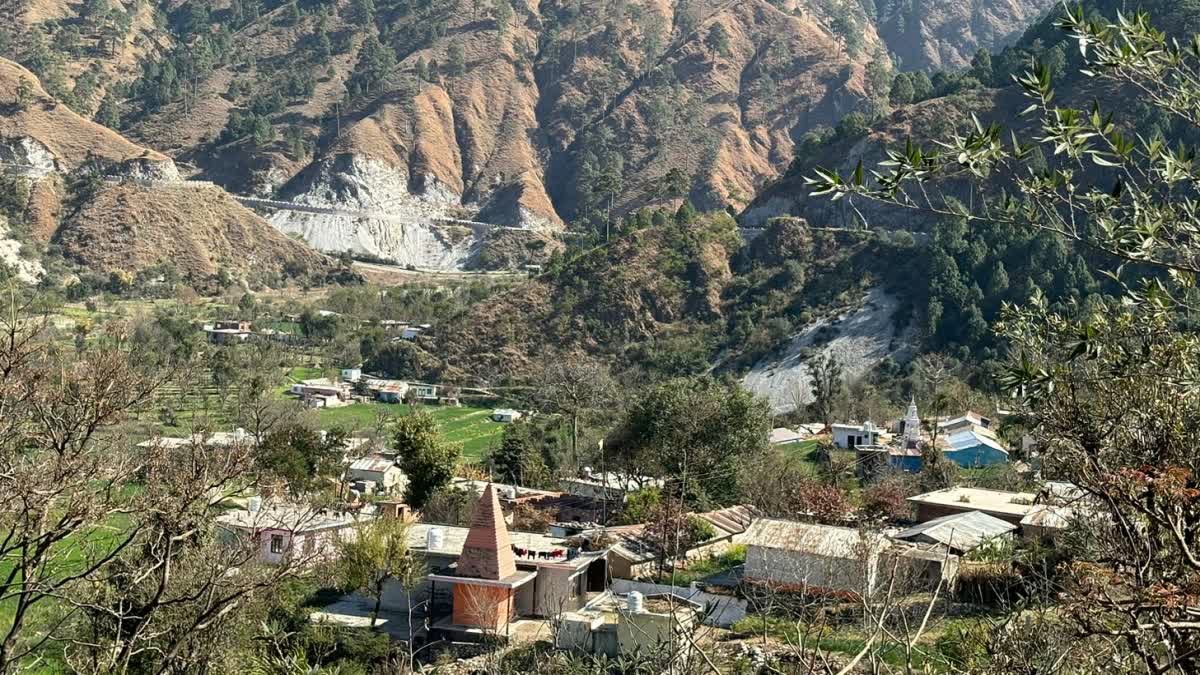By Amir Tantray
Jammu: Etched in history for being the two ends of the world’s highest railway arch bridge over the Chenab River, the villages of Bakkal and Kauri on the banks are examples of neglect and misery. For villagers, the Chenab Railway Bridge is a constant reminder of what's been lost as the future looks bleak for them, forcing them to migrate to other places for a better living.
“We can't even cross the bridge on foot to visit our relatives,” says Amarnath, the former Sarpanch of Sersandwan Panchayat. “This bridge that connects two regions divides our community.”
During the construction and after the completion of the Chenab Rail Bridge, the area had become a tourist attraction, but since the security forces have imposed restrictions on going near the bridge, tourists have faded away, and people are back to the time that was there before the start of construction of the bridge.

“For people from outside, it looks cosy that the names of Bakkal and Kauri villages have got international recognition after the construction of the world's highest railway bridge between the two. But on the ground, we are facing its drawbacks,” Amarnath claims.
The villagers are at the receiving end of the adversity brought by the project. “The surrounding areas are without water after the construction of the bridge and tunnel. All the sources of water have dried up, and the flow of water from the tunnel has been directed towards the Reasi side,” he says.
Loss of Livelihood
According to the former sarpanch, the farm has turned barren, forcing people to migrate to other places for a better living. “Earlier, when the construction had started, our people got jobs in the project, but once the project was over and the construction company left, there was no employment anymore,” he says.
He claims the people hoped to get a livelihood given the tourism potential of the area, but their hopes were short-lived as authorities put restrictions on the movement of civilians. “Tourists were thronging our villages daily, but since the restrictions have been imposed, no one is allowed to move near the bridge, and no one is visiting our area,” he adds.
Sersandwan panchayat is home to around 2500 to 3000 souls with people mostly dependent on agriculture and labour work. The agricultural land is rain-fed, and other natural sources of water have also vanished due to the construction work.

The situation on the other side of the bridge, in Kauri village, which falls in the Kanthan-A panchayat of the Arnas rural block of Reasi district, is no different.
“Our water sources have dried up and unemployment has increased, but we have lost our land without getting any sort of compensation. Several kanals [1 kanal is equal to 0.125 acre] of land have vanished after the construction agency dumped the material they dug out of the tunnel. In return we haven’t got a single penny as compensation from railways,” says Mohan Lal, a local of Kanthan-A Panchayat area.
“The only benefit we have got over these years is that when the construction of the bridge started and we got employment there, concrete houses replaced old muddy houses,” he said.
A former Sarpanch of the Kanthan-B panchayat, Sansar Singh, believes that they don’t have any benefit from the construction as people have lost jobs and have been left to search for other things to earn a livelihood for their families. “We live in hilly areas where generating employment is tough as compared to other areas. Since the company left, our youth will have to return to Reasi or other areas to work to earn a livelihood for their families,” Singh says.
“Earlier, we lost land to the Salal Hydroelectric Power Project many years ago, and now the railway line has consumed our land. These projects have brought only miseries instead of any relief,” he adds.
Disconnect Of Communities
Railways have constructed a two-platform station in Bakkal village, but the train between Katra and Srinagar will not stop at the station as the Vande Bharat train doesn’t have any halts there.
People of these villages are well aware that if they have to board the train, they will have to travel up to Katra. “We can only have a look at trains passing through the bridge, whereas our mode of transport will continue to remain commercial vehicles available in the area,” says Amarnath. “Some time back we were issued passes by the railway authorities to cross the bridge on foot, but that too has been withdrawn.
The Chenab Bridge brought the distance between Bakkal and Kauri to 1.3 kilometres, but people will have to travel for more than two hours to cover the distance of over 40 kilometres if they have to visit each other.

The distance from Bakkal to Katra is around 50 kilometres but the people of these villages will have to travel around 80 km to reach Katra if they need to board a Vande Bharat train to Kashmir.
“We have relatives on both sides, and we were hoping that this bridge may bring us closer, but with things unfolding, it has come to the fore that we have to rely on the old road via Jyotipuram (near the Salal hydroelectric power project) to cross the river Chenab. No footbridge or motorable bridge has been constructed in the area,” Mohan Lal says.
“The irony is that we don’t have a railway station on our side like what is there in Bakkal. Giving one would have benefitted people of around five Tehsils of the Arnas belt, but we have been ignored,” he added.
Asked about it Sanjay Kotwal, SSP GRP told ETV Bharat. that the bridge is not for the movement of people. "The bridge is for railways and not for the movement of the people. Once it was handed to GRP, it was closed to the general public," Kotwal said.
More About Chenab Railway Bridge
The Chenab Railway Bridge is the world’s highest railway arch bridge, 359 meters above the riverbed. The total length of the bridge is 1315 meters, including a 650-meter-long viaduct on the northern side.
In December 2003, a project to construct the arch bridge over the Chenab River of the Udhampur-Srinagar-Baramulla-Railway-Line (USBRL) was approved, whereas in February 2008 the contract was awarded, but in September 2008 the work was stopped due to security concerns.
In July 2017, the construction started, and in August 2022, the work on the final joint of the bridge was completed, whereas in March 2023, track laying was completed.
Read More



